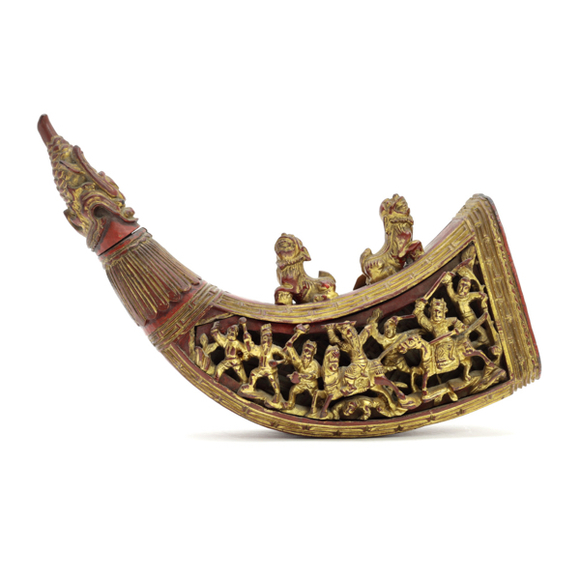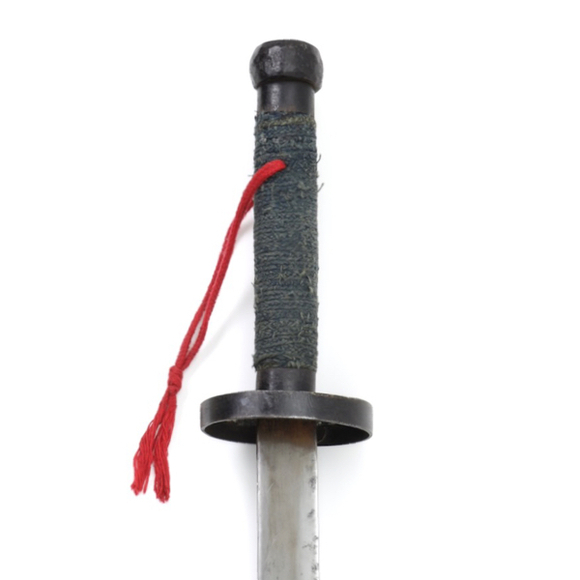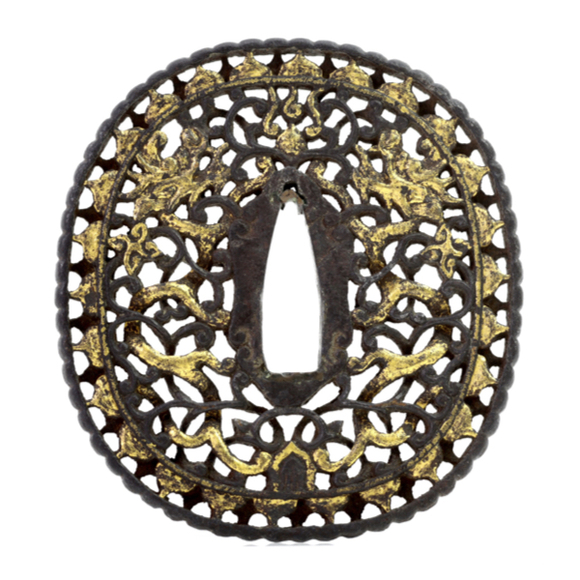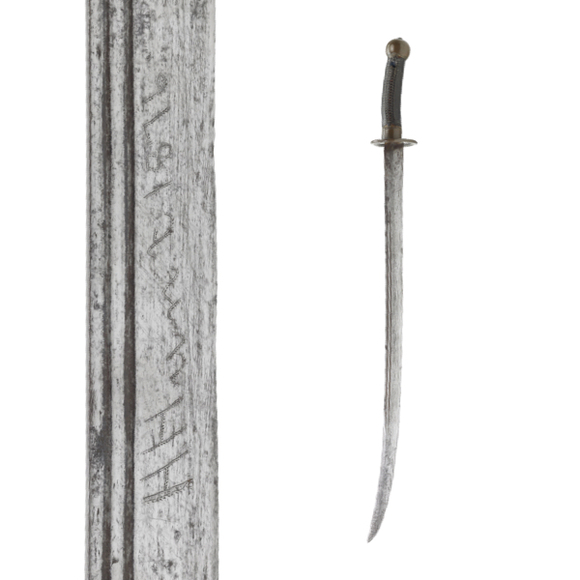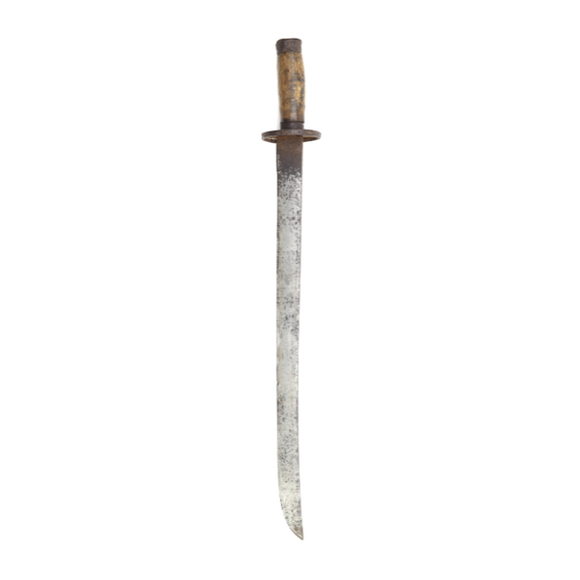The Imperial Bodyguard of the Qing dynasty was an elite unit within the elite Eight Banners troops, they were generally picked from the most capable and loyal soldiers.
Their task was to escort the emperor and protect his person.
Mandarin Chinese: Shìwèi Qīnjūn (侍衛親軍)
Manchu: Gocika Bayara

The individual imperial guard was called Shìwèi (侍衛) in Chinese.
Hiya in Manchu.
Most Imperial Guards came from the Upper Three Banners; the Plain Yellow, Bordered Yellow, and Plain White.
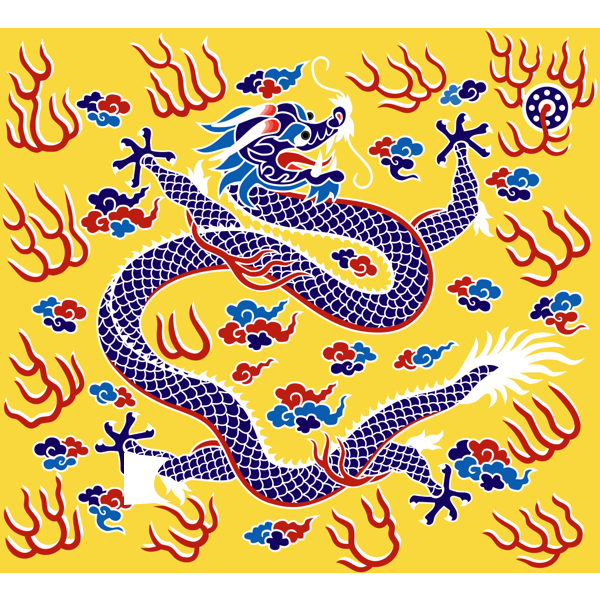
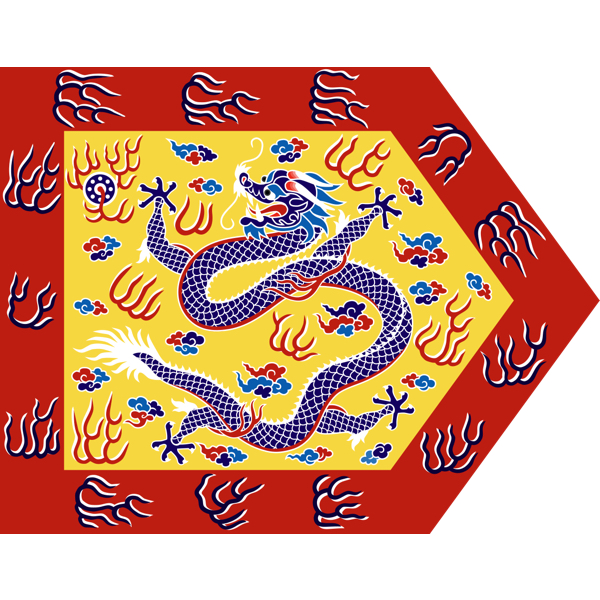
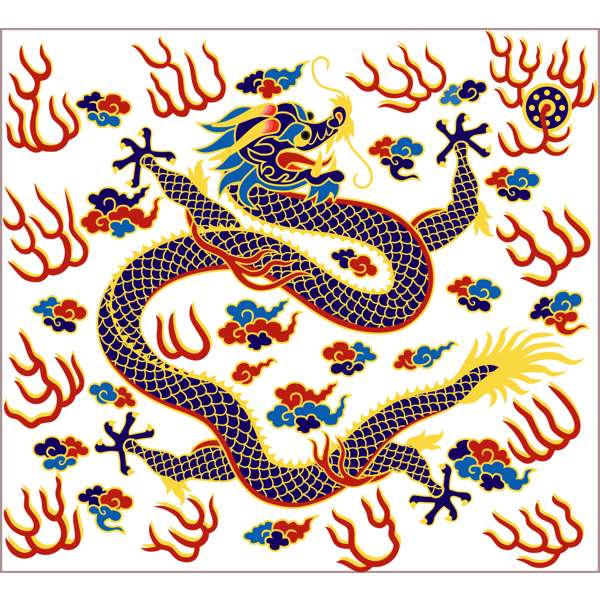
Imperial guardsmen were among the best-paid soldiers in the realm, with exclusive rights to wearing colors and materials normally only reserved to the emperor. This included golden ornaments, certain pearls and gemstones, and the use of imperial golden yellow silk as a grip wrap on their swords.1
Officers of the Imperial bodyguard paid up to 600 taels of silver for their equipment to which they would often apply their personal tastes. This lead to them being somewhat of fashion icons among Qing soldiers.2
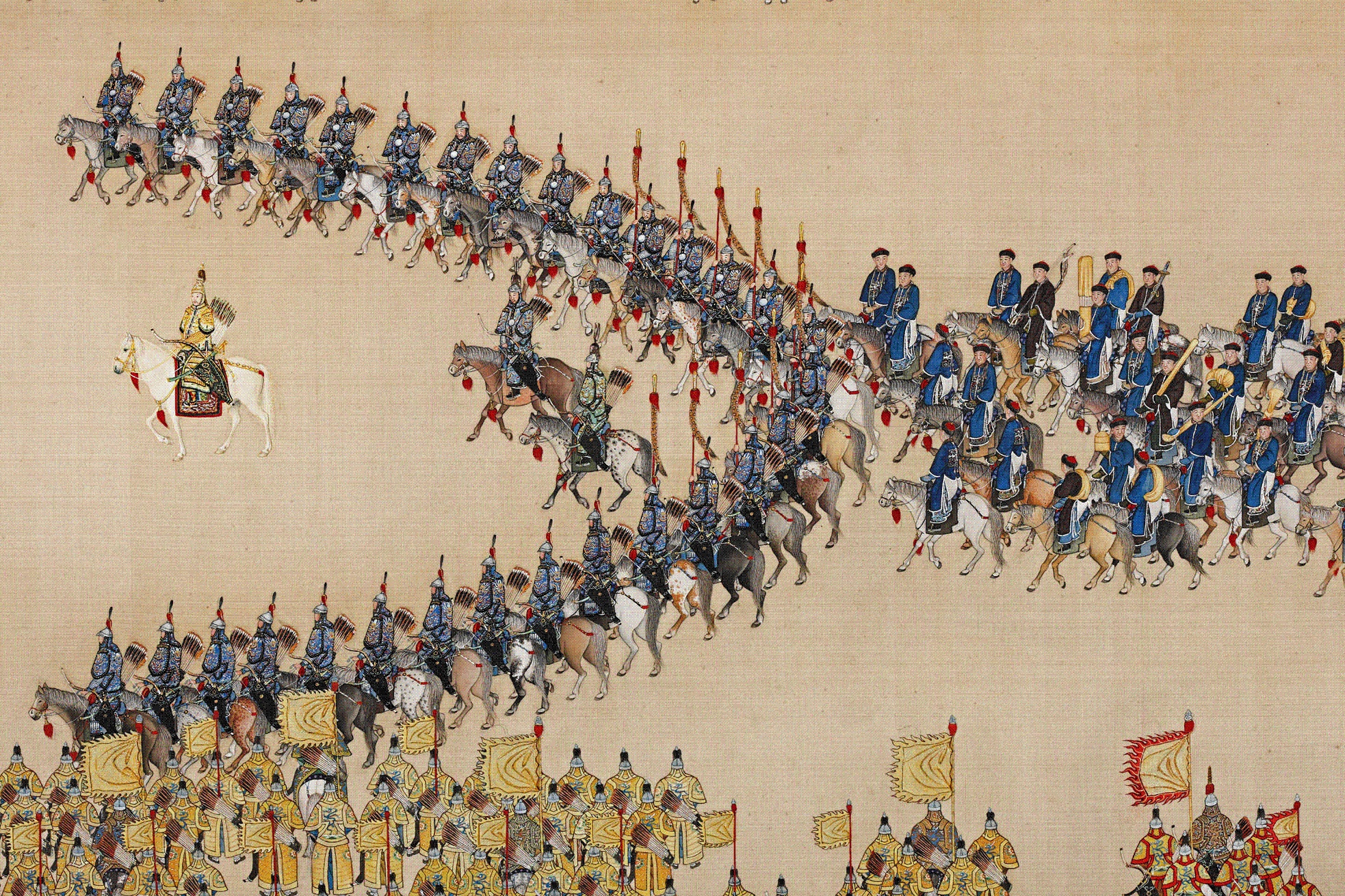
The Qianlong emperor followed by his guards during the Grand Review of the Troops, Beijing.

The Qianlong emperor hunting with some of his guards.
Structure
Comprehensive statutes of the Eight Banners of 1796:
The Imperial Guard was lead by two Shìwèi Nèi Dàchén (侍衛內大臣) or "Chamberlain of the Guards". (Grade 1a).
Next were a varying number of Nèi Dàchén (內大臣) or Senior Assistant Chamberlain. (Grade 2a).
They lead up to 200 Shìwèi (侍衛) or "Imperial Bodyguards" divided over three grades. (Grade 3a - 5a).3
Brunnert and Hagelstrom provide a snapshot of the organization as it was in 1911:
Office of the Imperial Bodyguard
Lǐng Shìwèi Fǔ (領侍衛府) or Shìwèi Chù (侍衛處)
Controls the affairs of the Qīnjūnyíng (親軍營) composed of Shìwèi Qīnjūn (侍衛親軍) whose task it is to escort the emperor, perform certain palace duties, and protect the emperor's person.
Consisting of:
6 Chamberlains of the Imperial Bodyguard, Lǐng Shìwèi Nèi Dàchén (領侍衛內大臣)
(2 Of which are selected as Chamberlains of the Rearguard, Hòuhù Dàchén (後扈大臣))
6 Senior Assistant Chamberlains of the Imperial Bodyguard, Nèi Dàchén (內大臣)
# Junior Assistant Chamberlains of the Imperial Bodyguard, Sàn Zhū Dàchén (㪚秼大臣)
(Often a hereditary title)
(10 of the Senior and Junior Assistants are appointed Chamberlains of the Vanguard, Qiányǐn Dàchén (前引大臣))
The Imperial Bodyguard was divided into:
1. Senior Bodyguards
Shìwèi Qīnjūn (侍衛親軍) or Nèihù Jūnyíng (內護軍營) in Chinese.
Gocika Bayara in Manchu.
Consisting of:
480 Senior Bodyguards, Shìwèi (侍衛) or Huālíng Shìwèi (花翎侍衛), wearing the peacock feather.
60 of which are First Class, Yī Děng (一等)
150 of which are Second Class, Èr Děng (二等)
270 of which are Third Class, Sān Děng (三等) and Fourth Class, Sì Děng (四等)
2. Junior Bodyguards
90 Lánlíng Shìwèi (藍翎侍衛), wearing the blue feather.
Lamun Funggala in Manchu.
3. Clansmen Corps of the Imperial Bodyguard
Zōngshì Shìwèi (宗室侍衛) or Sān Qí Zōngshì Shìwèi (三旗宗室侍衛) in Chinese.
Consisting of
150 Sān Qí Shìwèi (三旗侍衛).
9 of which are First Class, Yī Děng (一等)
18 of which are Second Class, Èr Děng (二等)
63 of which are Third Class, Sān Děng (三等) and Fourth Class, Sì Děng (四等)
(Of the above, indefinite numbers are selected as Guards of the Antechamber, Yùqián Shìwèi (御前侍衛) and Guards of the Qianqing Gate, Qiánqīngmén Shìwèi (前清門侍衛)).
60 Imperial Bodyguards wearing the Leopard's tail, Bàowěi Bān Shìwèi (豹尾班侍衛).
Agūrai Hiya in Manchu.
3. Chinese Corps of the Imperial Bodyguard
Divided in First Class, Yī Děng (一等), Second Class, Èr Děng (二等) and Third Class, Sān Děng (三等).
When on duty, divided into bān (班) or "reliefs" which in turn are divided into Yì (翼) or "wings".
Each relief is lead by a Commander of a Relief, Shìwèi Bānlǐng (侍衛班領).
Below him is a Second in Command of a Relief, Shǔ Qīnjūn Xiào (署親軍校).
For every 10 privates, there is an Imperial Guard Sergeant, Shìwèi Shénzhǎng (侍衛什長).
4 The Emperor's Personal Detachment of the Bodyguards
Consisting of
77 Lieutenants, Qīnjūn Xiào (親軍校).
70 Sub-Lieutenants, Shǔ Qīnjūn Xiào (署親軍校).
7 Sergeants Wěi Shǔ Qīnjūn Xiào (委署親軍校).
1756 Privates, Qīnjūn (親軍).4
Outside the palace
Their palace duty often meant they had a fairly close relationship with the emperor which lead many to rise up to even more important ranks. As the emperor's most trusted men, he often sent out one of his imperial bodyguards to border conflicts as interim managers. Many of them became sung war heroes, whose portraits were hung in the Zǐguāng Gé (紫光閣) or "Pavilion of Purple Brightness":
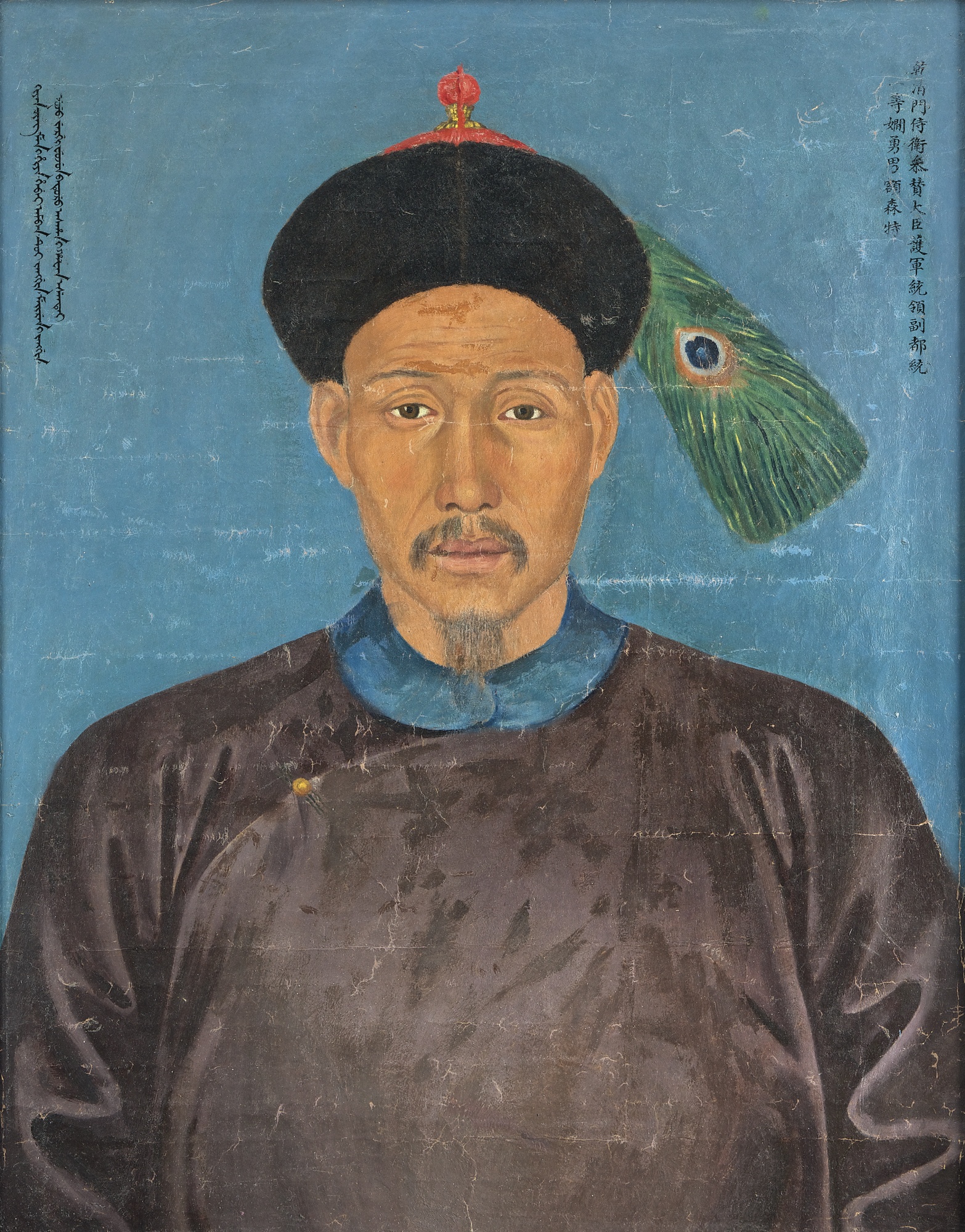
Imperial Bodyguard Esentei
Imperial Bodyguard of the Qianqingmen [palace gate], Imperial Councillor, Commander of the Banner Guard, Commander of the Northwest Border Militia, Baron of the first rank, with the designation Cultured Hero; Esentei.
Qianlong's eulogy:
"Once when his Tiger-Hunting Brigade was surrounded
he wanted to die with his men,
and whenever ordered to advance and exterminate rebels,
he was delighted to roll up his sleeves and set to it.
Since he was greatly experienced,
I had him take part in strategic planning,
and when he was placed in full charge, he continued to have success
after success." 5
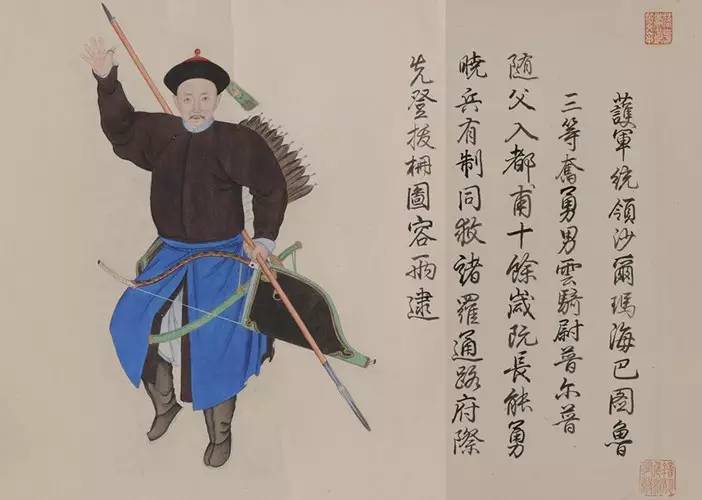
Imperial Bodyguard Purpu
Imperial Bodyguard of the Antechamber (领队大臣), Commander of the Northwest Border Militia, Banner General, Baron of the third rank, with the designation Hero of Merit, Purpu.
Qianlong's eulogy:
"His father was the son of Ridi, Zifeinong'er, who when ordered to
advance and exterminate rebels exerted himself to the utmost - sparing nothing.
Weaponed and armoured, sheltering in snowy dugouts on icy
mountains, he was so able at engaging and withdrawing that enemies
dared not resist him." 6
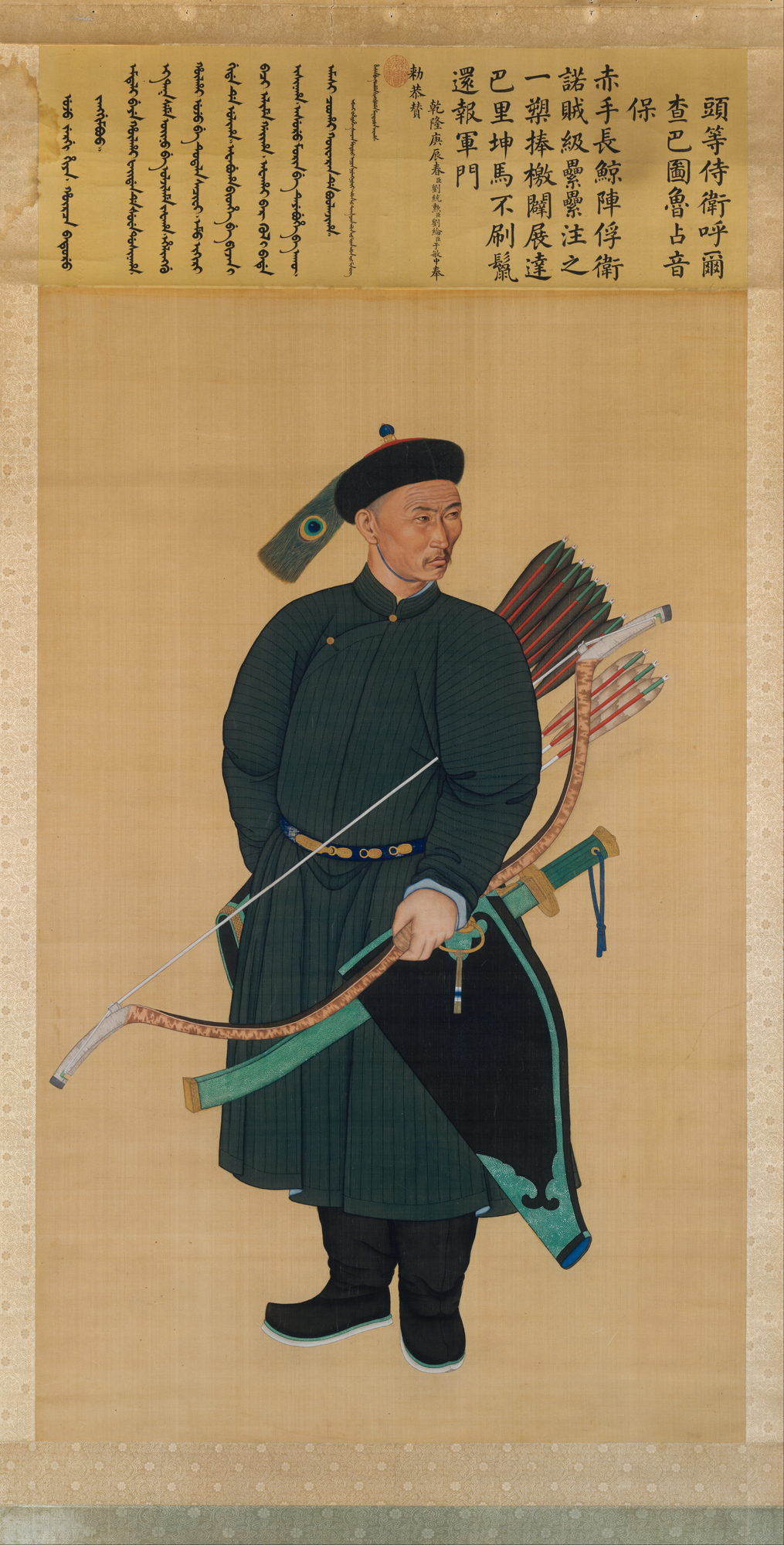
Imperial Bodyguard Janggimboo
Metropolitan Museum, New York. Accession number: 1986.206
Janggimboo, Imperial Guard of the First Rank and Hurca Baturu.
Qianlong's eulogy:
"With bare hands [he tackled] a huge whale.
Capturing [members of] the Oirat at the battlefield.
Many were the rebel heads
skewered on his lance.
Carrying an official summons to war from Pizhan,
When he arrived at Bar Kol,
He did not [waste time to] brush the mane of his steed.
[Immediately he] turned back to report to his commander." 7
Notes
1. Pu Jiang et al., eds., Huangchao Liqi Tushi (皇朝禮器圖式), or "Illustrated Regulations on the Ceremonial Paraphernalia of the Dynasty", Palace Edition of 1766 (British Library, 15300.e.1). This version is based on a manuscript of 1759.
2. Mark C. Elliott; The Manchu Way. Stanford University Press, 2001. Page 441.
3. Ibid. Page 366. (From Baqi tongzhi 八旗通志, published in 1739 and amended in 1796.
4. H.S. Brunnert and V.V. Hagelstrom; Present Day Political Organization of China. Published 1911. Pages 25-27.
5. See Battle of Qurman.
6. Ibid.
7. Ibid.


